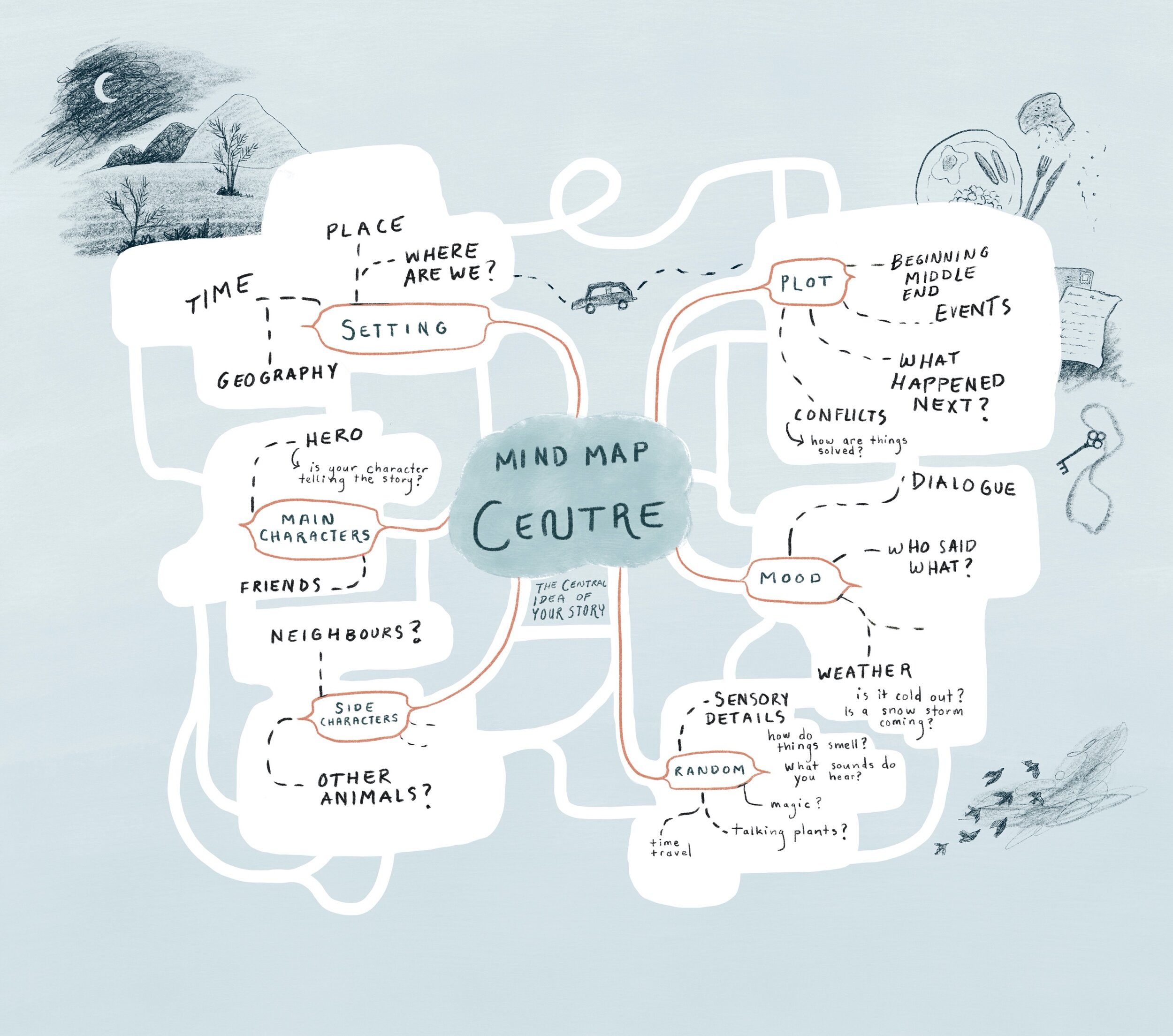Story Mind Map
Exhibition: Companion Species
Artist: AFA Permanent Collection - Various Artists
Overview
After viewing the works in Companion Species, we can reflect upon the types of relationships that we have with animals and how much they are a part of our everyday lives, not only as members of our moral community, but also in all the ways these relationships are reflected in our culture — especially through literary and oral story telling. The artworks in Companion Species can also be interpreted as a means of storytelling. They set a scene, depict characters and also set a mood. It is up to us as the viewer to determine where the story will lead, or perhaps what came before.
Many forms of story telling also commonly use animals as characters and some stories are even written from the animal’s point of view. This allows access to view points that humans do not have which can make for very creative story telling! Before we begin writing a story, we can organize all the wonderful and strange ideas we have floating around inside our heads and write them down on paper.
In this creative brainstorming activity, participants will select a work of art from the exhibition to use as a visual prompt to build their own story mind map. They will examine and interpret all of the details in the artwork to inspire their story, focusing on the companion animal(s) depicted as the main character(s) and create a fun and visually engaging mind map to record and plot all of their ideas.
Objectives
Learn how to capture ideas creatively in a mind map.
Organize details and structures needed to build a short story.
Interpret a work of art to inspire written word.
Materials
Blank paper
Pencil
Eraser
Coloured markers and pencil crayons
Instructions:
Step One
Have participants each select a work of art from the exhibition that they would like to use as a visual prompt to inspire their story. Sit in front of the selected artwork with a piece of paper to begin brainstorming. Take the time to carefully examine all of the details in the artwork to provide you with the information needed to inspire and build a story.
Step Two
Start building your mind map by writing down all of the ideas and details you have floating around your head from looking at the artwork. Focus on the animal(s) depicted as they will be the main character(s) of your story. You will use your mind map to help organize all of your ideas. Where does the story take place? What came before? What is the weather? What happens next? You can describe smells, colours, textures, sounds. Will you include dialogue, is someone speaking, what’s happening? Who are your main characters? Is the story being told from the animals point of view?
Step Three
Be creative with your mapping process and think of all the different ways you could visually capture your ideas. Use coloured drawing materials to help organize and illustrate your mind map. You can look up ‘illustrated maps’ online to inspire you and see if you can creatively translate some ideas into a mind map. Does your map look like an actual map - does it have ‘roads' connecting your ideas? Is your story an adventure and your map drawn like a treasure map; with a “start”, obstacles along the way and the ‘X’ marks your story’s conclusion? Maybe it looks like the inside of your head - where all your ideas are coming from! Maybe you are directly inspired by your chosen artwork, such as Vivian Lindoe’s Tree Cats, and create a tree mind map with branches connecting your ideas and leaves holding all the details.
Step Four
After your mind map is complete you can begin writing your story! Or, keep your mind map and file it away until you are inspired and ready to finish.
Variations:
Older participants can add more literary structures and complex devices to branches of their mind maps.
Younger participants can use the artwork as a visual prompt to tell a very short oral story. You can provide them with simple starter story telling language to help them begin;
“Suddenly…”, “One day…”, The next thing that happened was…”

